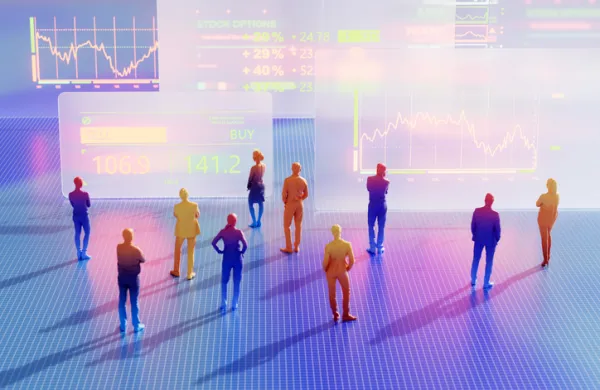With AI-related stocks accounting for 75 percent of S&P 500 returns since ChatGPT was launched in 2023 — along with 80 percent of earnings growth and 90 percent of capital spending — there’s little surprise that AI is disrupting many industries even as talk of a bubble casts a cloud over markets.
Among AI’s newest victims: the entertainment content industry.
“While the prior decade was defined by disruption in content distribution, the next decade will be defined by disruption in content creation,” said Michael Cembalest, J.P. Morgan Asset Management’s chairman of market and investment strategy,
This development creates opportunity for some, but it also creates risk for legacy media companies, according to Cembalest.
Most media stocks have underperformed since 2022, he explained, citing a decline in viewership by those under 50 for cable TV programming, with the exception of sports. The slow post-pandemic recovery in motion picture box office receipts is another nagging problem.
Cembalest noted that “in 2023, Hollywood put out [about] 15,000 hours of TV and film while there were 300 million hours of content uploaded to YouTube.” YouTube now has the largest share of television screen time, followed by Disney and Netflix.
The problem for the industry is that “it’s getting easier and cheaper to produce content just as consumers are lowering their quality standards for consuming it.” he said.
Cembalest explained that “AI text-to-video tools like Pika, Runway, Stable Diffusion, and Sora are making it easier for new entrants to create high-quality content for both digital and TV platforms.”
It’s all happening quickly. “In 2024, AI models were first able to match human capabilities on Visual Commonsense Reasoning tasks, and text-to-video models are building on that progress,” he said in a new “Eye on the Market” report titled “The Winter of Our Discontent.”
Cembalest said that some OpenAI programs are “already eclipsing the capabilities of what were leading edge video generation models just a few months ago.”
He explained that one open source version of text to video can create videos at 10 percent of the training cost of older models and “of comparable quality.”
Meanwhile, “democratization of high-quality content creation is growing,” he said. "YouTube has already reached 10 percent of all content viewing on televisions (not even including mobile devices), and social media and video networks have even overtaken television as a source for news, according to Nielsen polling.”
He said that “if viewers consider just 0.01 percent of that YouTube content to be just as interesting as Hollywood fare, that’s twice Hollywood's annual content output.”
Of course legacy media companies could also benefit from AI. According to a 2023 analysis from Bain & Company that Cembalest cited, a shift towards more virtual production could reduce production times and costs by 5 percent to 10 percent for some films.
One kink in all of these projections is the copious amounts of electricity required to power AI — another growing concern.
“Data centers [used for AI] are eclipsing office construction spending and are coming under increased scrutiny for their impact on power grids and rising electricity prices,” said Cembalist. “Specialized power rates for most data centers aren’t enough to cover costs of a new natural gas plant (leaving other customers to foot part of the bill).” He said that 70 percent of last year’s increased electricity cost in the region that includes New York and Washington D.C. was the result of data center demand.







